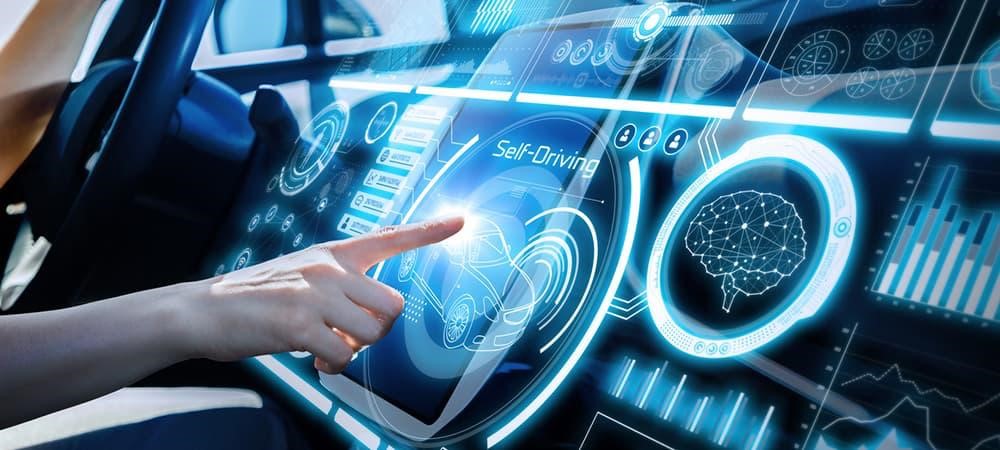When you enable the technology, your car will move along one lane of the road, and if you need to change lanes, you should just put your turn signal on.
Yes, you guessed it, I’m talking about self-driving cars!

When you put your turn signal on, the car moves in the direction you want, without the need to move the steering wheel or look back through the rear-view mirror. Also, according to the traffic, the car’s speed is adjusted, and in case of an accident, the brakes will save you.
This system can do double and oblique automatic parking. Also, by using the car system, you can take your car out of the parking lot and then get in it.
In case of emergency and the system’s inability to manage the car, the system will notify you with a few beeps to retake control of the vehicle. It should be regarded that you have to keep your hands on the steering wheel during the whole period of automatic driving; Because there is always a possibility of an accident as the self-driving cars technology – which is based on artificial intelligence – has not yet matured.

How do self-driving cars work?
Self-driving cars performance is based on three things:
- 360-degree view of the environment
- Cloud-based information
- Decision making
- 360-degree view:
The most significant thing about driving is paying attention to the surrounding environment. With only two eyes in front of the human head, it is impossible to see and control all around the vehicle. However, in automatic cars, sensors have been used to provide 360-degree visibility.
In general, sensors are devices that detect and respond to changes in the environment. Inputs can come from a variety of sources such as light, temperature, motion, and pressure. Sensors generate valuable information. The IoT and its counterpart, the Industrial IoT (IIoT), are taking sensor use to a new level.
Many types of IoT sensors are available today that make the ever-present dream of self-driving cars a reality. Blind point control sensors, forward collision warning, radar, camera, LIDAR, and ultrasonic all work together to make it possible to drive a car.
- Cloud Computing
Automotive cars use cloud computing to operate based on traffic data, weather, maps, adjacent vehicles, and surface conditions, among other cars and roads, which help them better monitor their surroundings and make informed decisions. Although they can do small computing tasks with their local hardware, Cars must be connected to the Internet.
- Decision Making
All the data that the car collects needs to be analyzed to determine the best practical decision. This vital function is the control algorithms and car software duty. This is the most complicated part of self-driving cars. Decision making is a crucial task as it must be completely flawless. A small “defect” can be fatal.

MACHINE LEARNING AND SELF-DRIVING CARS
In recent years, machine learning has paved its way to self-driving cars technology.
Says Ammar Shah, co-founder and CEO of Wayve: “The missing piece of the automotive technology puzzle is intelligent algorithms, not sensors, rules, and maps. Humans have an amazing ability to perform complex tasks in the real world because the brain allows us to learn quickly and gain knowledge through a great deal of experience. We want to make our vehicles better in terms of brains, not more hardware.”
With this approach in mind, the Wayve team used a single front-facing camera in Renault Toyota with the ability to control the throttle, brake, and steering. They connected the camera to a graphics processing unit with the intelligence to simultaneously analyze all camera data; They also used a machine learning program based on testing, optimization, and evaluation to bring machine learning into their technology.
The car started moving in a narrow curved path with the driver behind the wheel. The control of all car components was handed over to the software. Every time the Renault Twizzi car went off the track, the team stopped the process and corrected the algorithm. The algorithm was penalized for making a mistake and was rewarded for doing the right. In 20 minutes, they performed less than 20 experiments, and the car learned how to follow the path of a curved line.
The Wayve officials believe that machine learning systems quality will be the key to success in the autonomous car market over the next decade.
If you like coding for self-driving car software; Congratulations! You are entering a new and potentially lucrative field. But as these cars are not yet widespread, learn these skills in your spare time so you can keep your current job. Maybe in the not too distant future, these skills will come in handy.
And last but not least, the C ++, Linux, and Python programming languages are currently the most popular self-driving cars software languages. So try to increase your skills in these.

